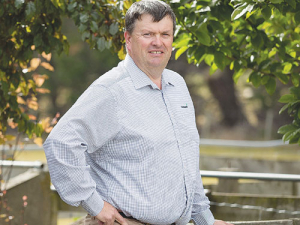MSA triumph
OPINION: Methane Science Accord, a farmer-led organisation advocating for zero tax on ruminant methane, will be quietly celebrating its first foray into fertiliser co-operative governance.
 Paul McKee says a good preventative worm programme is critical to ensure worm infections are kept under control.
Paul McKee says a good preventative worm programme is critical to ensure worm infections are kept under control.
Good Autumn growth sets the scene for maximum growth rates in beef cattle post-weaning, but beware worms in pasture, warns Paul McKee, an animal health technical manager at Ravensdown.
Left uncontrolled, seasonal worm peaks can reduce animal health and performance and rob farms of their productivity gains, McKee says. Energetic prevention is a must to keep worm infections under control.
With worms increasingly resisting drenches – especially the single active endectocides – worm control efforts must be effective and sustainable, McKee says.
Ravensdown recommends faecal egg count reduction tests (FECRTs) in which a mob is left undrenched until egg counts reach a moderate level, then divided into groups. Each group is then given different drenches and faecal samples are taken over the following 10 days to determine different treatments’ effectiveness.
Although FECRTs are considered expensive by some, the cost can be offset by drenching less often with effective combinations of drenches, McKee says.
Post-drench faecal egg counts and larval cultures will help determine if there is a need to change treatment plans.
Double or even triple combination drenches should be used if possible, he said.
“It’s harder for worms to survive triple drugs than it is to survive one drug at a time.”
However, McKee adds that it’s getting late in the season for testing drench combinations, since parasites mainly affect young stock, and testing on older stock better able to handle parasites can make an ineffective drench look better than it is.
Meanwhile, Ravensdown recommends specific management practices to help kill parasites:
• Avoid grazing young cattle intensively on short pasture with high numbers of larvae or on pasture grazed 1-2 months previously
• Use older cattle to clean up pasture where young cattle have been grazing
• Cross graze with sheep to reduce pasture larvae levels
• Lift farm fertility to grow better quality forage for stock
• Use crops and new grass paddocks to provide low larval challenges at times when larval challenge is high on established pastures
• Feed animals well to increase their ability to deal with worm challenges.
Primary sector leaders have welcomed the announcement of a Free Trade Agreement between India and New Zealand.
At Pāmu’s Kepler Farm in Manapouri, mating has wrapped up at the across-breed Beef Progeny Test.
More than 150 people turned up at Parliament recently to celebrate the 20th anniversary of Horticulture New Zealand (HortNZ).
Biosecurity New Zealand says Kiwis should continue to keep an eye out for yellow-legged hornets (Vespa velutina) over the holiday season.
The Push-Up Challenge, an event which combines mental health and fitness, is set to launch in New Zealand in 2026.
Fonterra has slashed another 50c off its milk price forecast as global milk flows shows no sign of easing.

OPINION: The release of the Natural Environment Bill and Planning Bill to replace the Resource Management Act is a red-letter day…
OPINION: Federated Farmers has launched a new campaign, swapping ‘The Twelve Days of Christmas’ for ‘The Twelve Pests of Christmas’ to…